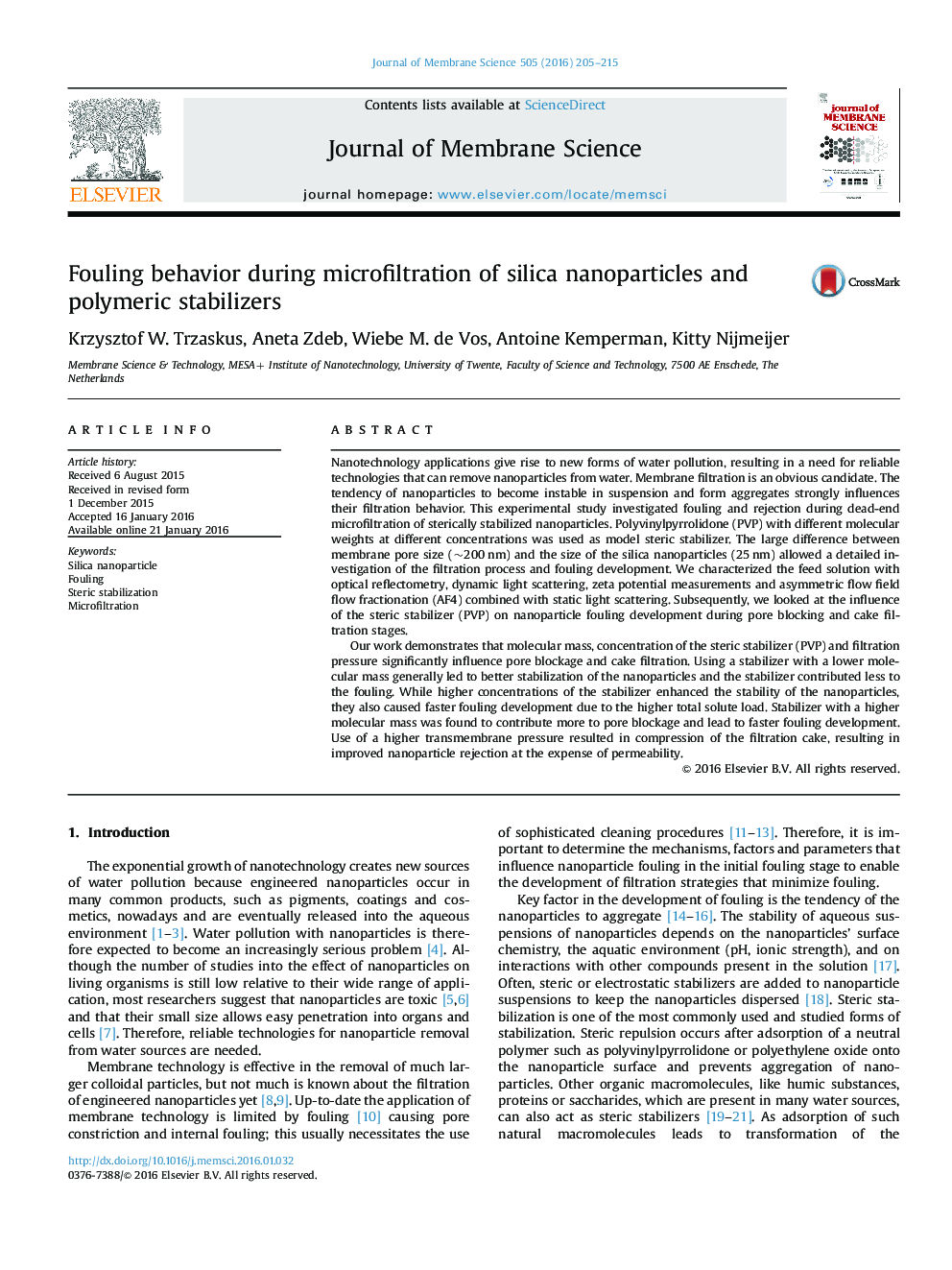| کد مقاله | کد نشریه | سال انتشار | مقاله انگلیسی | نسخه تمام متن |
|---|---|---|---|---|
| 632765 | 1455994 | 2016 | 11 صفحه PDF | دانلود رایگان |
• Molecular weight of steric stabilizers governs filtration behavior of nanoparticles.
• Concentration of stabilizer influences fouling and rejection of nanoparticles.
• Increased transmembrane pressure enhances nanoparticle rejection.
Nanotechnology applications give rise to new forms of water pollution, resulting in a need for reliable technologies that can remove nanoparticles from water. Membrane filtration is an obvious candidate. The tendency of nanoparticles to become instable in suspension and form aggregates strongly influences their filtration behavior. This experimental study investigated fouling and rejection during dead-end microfiltration of sterically stabilized nanoparticles. Polyvinylpyrrolidone (PVP) with different molecular weights at different concentrations was used as model steric stabilizer. The large difference between membrane pore size (~200 nm) and the size of the silica nanoparticles (25 nm) allowed a detailed investigation of the filtration process and fouling development. We characterized the feed solution with optical reflectometry, dynamic light scattering, zeta potential measurements and asymmetric flow field flow fractionation (AF4) combined with static light scattering. Subsequently, we looked at the influence of the steric stabilizer (PVP) on nanoparticle fouling development during pore blocking and cake filtration stages.Our work demonstrates that molecular mass, concentration of the steric stabilizer (PVP) and filtration pressure significantly influence pore blockage and cake filtration. Using a stabilizer with a lower molecular mass generally led to better stabilization of the nanoparticles and the stabilizer contributed less to the fouling. While higher concentrations of the stabilizer enhanced the stability of the nanoparticles, they also caused faster fouling development due to the higher total solute load. Stabilizer with a higher molecular mass was found to contribute more to pore blockage and lead to faster fouling development. Use of a higher transmembrane pressure resulted in compression of the filtration cake, resulting in improved nanoparticle rejection at the expense of permeability.
Figure optionsDownload high-quality image (227 K)Download as PowerPoint slide
Journal: Journal of Membrane Science - Volume 505, 1 May 2016, Pages 205–215
